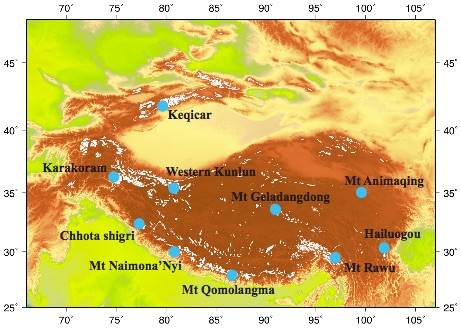himalayan glaciers dynamic
Climate warming over the 20th century has caused drastic changes in Mountain glaciers globally, and of the Himalayan Glaciers in particular. Monitoring of the Himalayan Glaciers has revealed a mixed picture; while many of the Himalayan Glaciers are retreating, in some cases locally stable or advancing glaciers in this region have also been observed. Recent controversies around the future of the Himalayan Glaciers, fuelled by projection reproduced in the 2007 Intergovernmental Panel on Climate Change (IPCC) report, have called for further observation and investigation into the time evolution of Himalayan Glaciers mass balance. Melting of the Himalayan Glaciers has direct consequences for the sea level worldwide, mountain glaciers being the prime contributors to changes in ocean mass. A significant rise in sea level could have a dramatic societal and economic impact. Melting of the Himalayan Glaciers also has direct consequences for regional hydrology; this directly affects the water supply that large river systems provide to over 1.4 billion people, and increases the risk of flooding events.
Earth Observation missions provide a way to precisely measure key variables over large areas, variables that help us understand and quantify the changes affecting the Himalayan Glaciers. It provides, for example, key dataset to understand the mechanisms by which mass is being lost and how the Himalayan Glaciers responds to the forcing of heat transport by the atmosphere. The purpose of this project is to quantify the degree of mass imbalance of the Himalayan Glaciers by exploiting Earth Observation dataset from past, present and future European Space Agency, Third Party, and Chinese satellite missions as well as field observation. The dataset will be used to produce deliverables such as glacier elevation change, flow divergence, and improve the determination of mass imbalance at the scale of the Himalayan range. The outcome of this work will provide a clearer understanding of the mass transfer between the Himalayan Glaciers and the hydrologic system, and a better grasp on the future of the Himalayan Glaciers, the Himalayan water supply, and the sea level worldwide.

